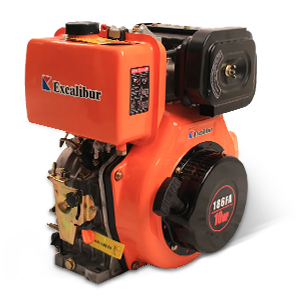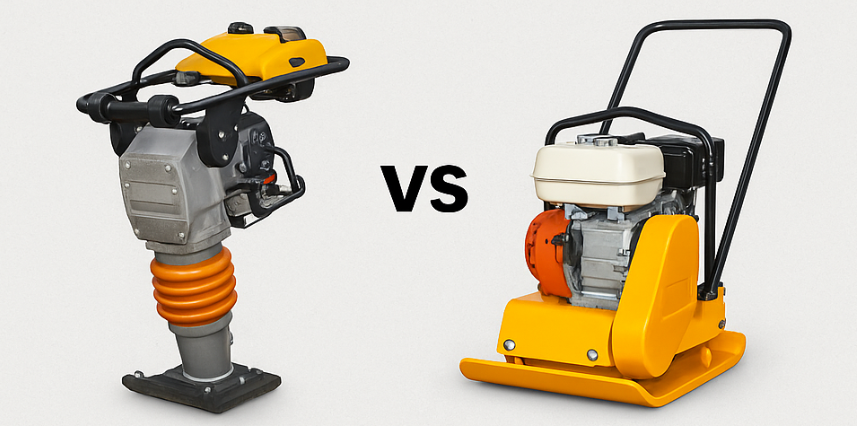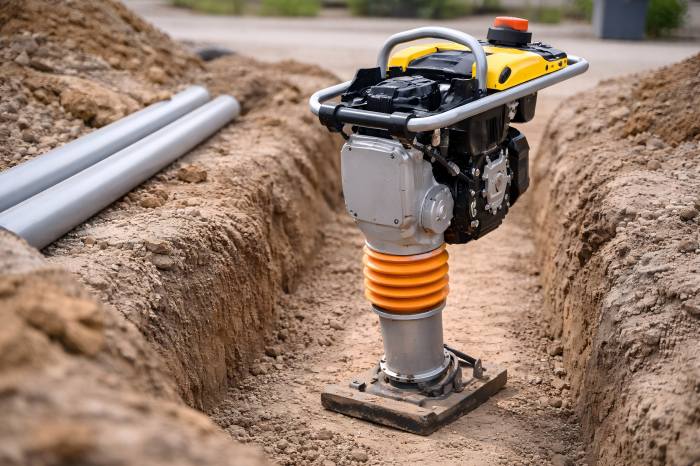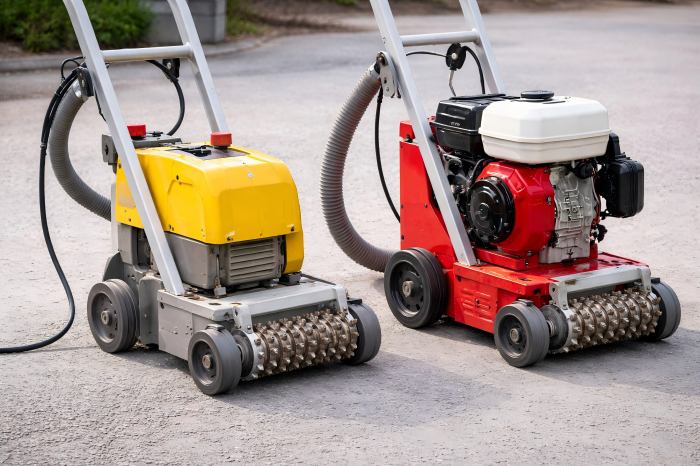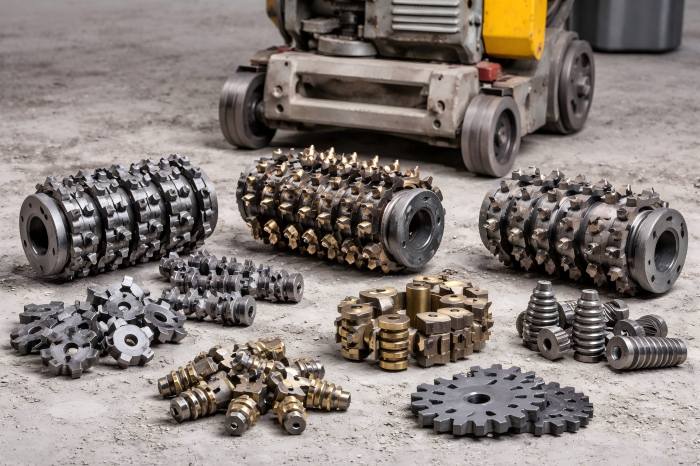In the world of construction and landscaping, soil compaction plays a critical role in ensuring the stability and durability of the ground before laying foundations, paving driveways, or setting up structural frameworks. Tamping rammers and plate compactors are two of the most widely utilized compaction tools. Although both serve the same fundamental purpose—compacting soil—they do so in significantly different ways, and each is suited for specific types of jobs.
As a professional plate compactor manufacturer, we are often asked: “Should I use a tamping rammer or a plate compactor for my project?” The answer depends on the nature of your jobsite, the type of soil, the depth of compaction required, and your overall operational goals.
We will dive deep into the differences between tamping rammers and plate compactors, highlighting their respective advantages, ideal applications, and technical considerations.
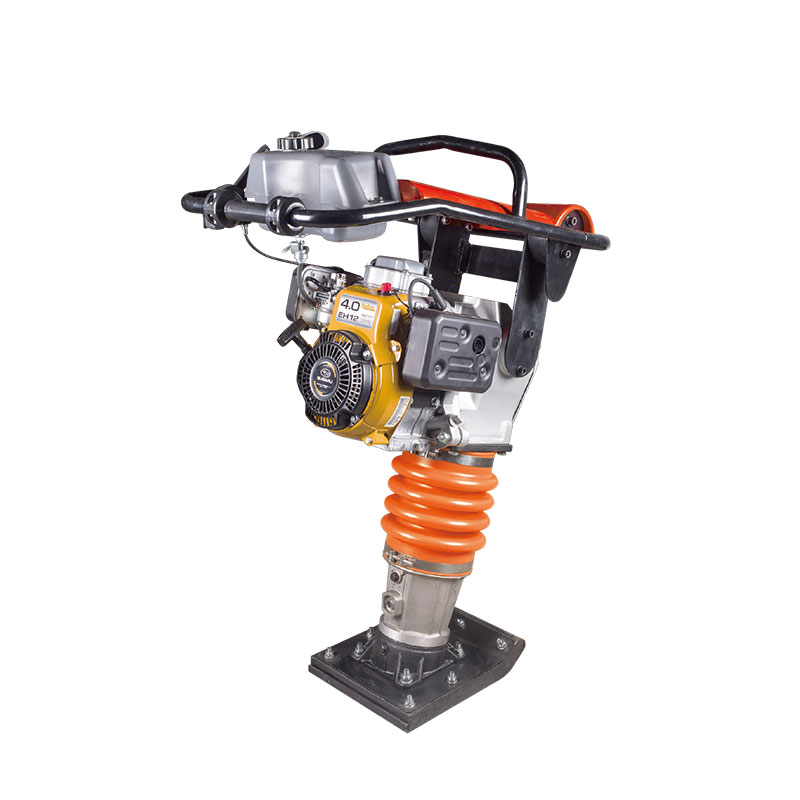
What is a Tamping Rammer?
A tamping rammer—often simply called a “rammer” or “jumping jack”—is a compact, high-impact machine designed to deliver powerful force to small surface areas. It consists of a long handle, a foot (or shoe), and a piston-powered engine that delivers rapid vertical impacts to the ground.
Tamping rammers are primarily used to compact cohesive soils, such as clay or silt, which require a punching force to eliminate air gaps and compress particles together.
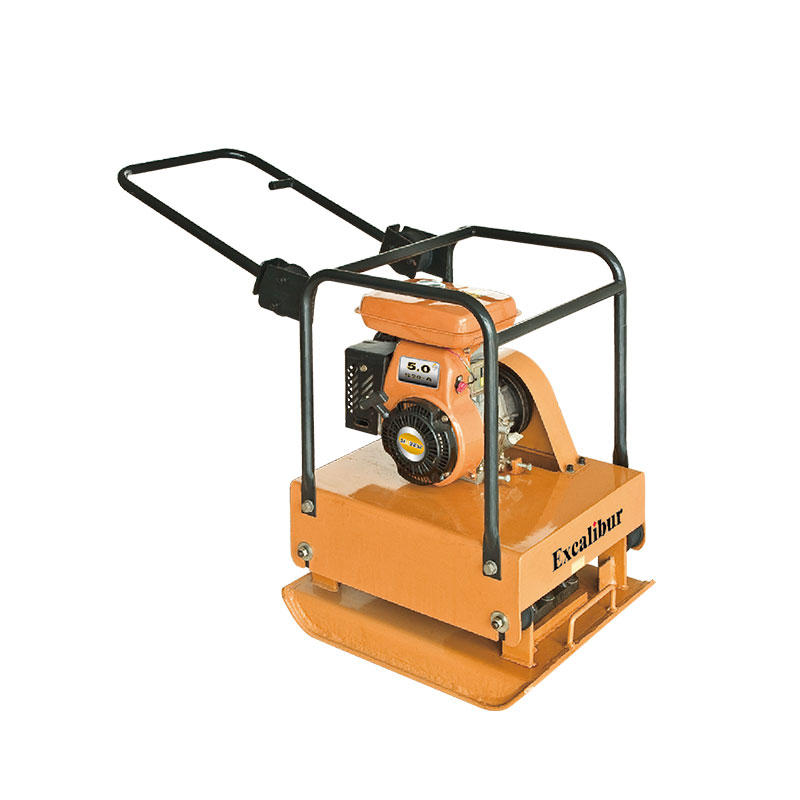
What is a Plate Compactor?
A plate compactor, on the other hand, uses a large flat plate that vibrates at high frequency to compact the soil underneath. The base plate moves rapidly back and forth, applying continuous pressure across a wider area. Plate compactors are ideal for granular soils like sand, gravel, or asphalt, where vibration allows particles to settle and interlock efficiently.
Key Differences at a Glance
| Feature | Tamping Rammer | Plate Compactor |
| Compaction Method | Impact (percussive force) | Vibration (high-frequency shaking) |
| Ideal Soil Type | Cohesive (clay, silt) | Granular (sand, gravel, asphalt) |
| Compaction Depth | Deeper penetration | Shallow to medium depth |
| Maneuverability | Highly maneuverable in tight spaces | Better on open, flat surfaces |
| Speed | Slower, more labor-intensive | Faster over larger areas |
| Surface Finish | Rough | Smooth, even finish |
| Machine Weight | Lighter (typically 60–80 kg) | Heavier (90–500+ kg options) |
How Each Machine Works
Tamping Rammer Operation
Tamping rammers rely on a piston-driven engine—usually gas or diesel—that creates vertical movement. Each stroke causes the foot to “jump” and deliver concentrated force into the soil. This vertical pounding motion effectively removes air and increases soil density, especially in sticky or high-moisture conditions.
The compact design of a tamping rammer allows it to be used in narrow trenches, along footings, or around obstacles. Operators can control the force and rhythm to suit specific job-site conditions.
Plate Compactor Operation
Plate compactors use an eccentric mechanism attached to a flat plate to generate rapid vibrations. These vibrations are transmitted into the ground, shaking soil particles into a tighter formation. Because the force is spread across a wider surface, plate compactors are excellent for covering larger areas quickly and producing a uniform, leveled finish.
Some models are forward-moving, while others are reversible for added versatility and productivity. As a plate compactor manufacturer, we offer both types depending on compaction requirements.
Soil Types and Site Conditions
Best Uses for Tamping Rammers
- Clay-rich or cohesive soils
- Trenches, narrow excavations
- Confined areas or spaces with limited access
- Jobs requiring deeper penetration
Tamping rammers excel where high-impact, localized force is necessary. The bouncing motion breaks up surface tension and helps compact areas that would otherwise trap air or moisture.
Best Uses for Plate Compactors
- Granular soils (sand, gravel, crushed stone)
- Asphalt patching or road repair
- Landscaping and pavement installation
- Flat, open surfaces
Plate compactors shine when you need to compact a large, flat surface quickly. Their broad plate ensures even force distribution, ideal for preventing settlement in roads, patios, or walkways.
Productivity and Efficiency
When it comes to productivity, plate compactors generally outperform tamping rammers on large-scale projects. Their wide plate covers more ground with each pass, making them ideal for roadworks, commercial landscaping, or driveway construction.
Rammers, though slower, provide targeted force. This makes them essential for specialized tasks that plate compactors cannot handle effectively, like working around piers, pipes, or tight wall edges.
Ease of Use and Operator Comfort
Plate compactors offer a smoother user experience with less vibration transmitted to the operator. Most modern models feature anti-vibration handles and easy controls. The machine glides over the surface, and operators can maneuver it with minimal physical strain.
Rammers, by contrast, are more physically demanding. The up-and-down motion requires firm grip, and operators may experience fatigue faster. However, their compact size and agility can outweigh the added effort in trench or confined applications.
As a manufacturer, we design our plate compactors with ergonomics and safety in mind, offering options with vibration-dampening systems, electric start, and low-emission engines to reduce operator fatigue.
Maintenance and Durability
Tamping Rammer Maintenance
- Regular checks on the air filter, piston seals, and foot pad
- More sensitive to fuel quality and oil ratios
- Requires periodic lubrication of the impact mechanism
Rammers have more moving components and a vertical impact system, so regular maintenance is essential to prevent wear or breakdown.
Plate Compactor Maintenance
- Routine inspection of the plate, eccentric shaft, and belt
- Repair requirements are lower than for rammers.
- Open design makes it easier to maintain and clean.
Thanks to their simpler vibration system and fewer high-stress parts, plate compactors often have a longer lifespan and lower upkeep cost—making them a cost-effective investment for many construction teams.
Cost Considerations
Generally speaking, tamping rammers are more affordable than large plate compactors, especially if you only need them for trench work or small-site compaction. However, the return on investment (ROI) of plate compactors is higher on larger projects due to greater area coverage and labor savings.
Here’s a quick comparison:
| Cost Factor | Tamping Rammer | Plate Compactor |
| Initial Purchase Price | Lower ($500–$1,500) | Higher ($800–$5,000+) |
| Maintenance Cost | Moderate to high | Low to moderate |
| Lifespan (with care) | 3–5 years | 5–10 years+ |
| Jobsite Versatility | Niche use | Broad applications |
As a manufacturer, we provide both entry-level plate compactors for general use and heavy-duty reversible models for professional-grade projects, giving you flexibility based on budget and scope.
Environmental and Safety Aspects
Newer plate compactors are often equipped with low-noise engines and emission control systems, making them suitable for urban and residential projects. The vibration output is directed downward, which reduces noise pollution and protects nearby structures.
Rammers tend to be noisier and generate more ground shock—making them less ideal in vibration-sensitive zones. However, their effectiveness in tight or irregularly shaped sites justifies their use when precision is key.
Both machines must be handled with proper PPE (gloves, ear protection, steel-toed boots), and operator training is vital for safe usage.
Which One Should You Choose?
Choose a Tamping Rammer If:
- You work mainly with clay or cohesive soil
- Your project involves trenches, edges, or confined zones
- You need deep, localized compaction
- Budget is limited, and portability is critical
Choose a Plate Compactor If:
- You need to cover larger, open areas efficiently
- Granular soil resembles sand or gravel.
- You require a smooth surface finish
- Operator comfort and productivity are priorities
While tamping rammers and plate compactors both serve the purpose of soil compaction, their strengths lie in very different areas. As a leading plate compactor manufacturer, we understand the demands of diverse construction environments and design our equipment to deliver optimal performance, durability, and user comfort.
If your projects involve large flat surfaces, driveways, roads, or landscaping, a plate compactor is the superior choice in terms of speed, finish, and long-term cost-effectiveness. On the other hand, tamping rammers are the go-to solution for tough, sticky soils and tight workspaces where precision and penetration are essential.
Not sure which one to pick yet? Speak with our staff for knowledgeable advice. We are pleased to suggest the ideal compaction solution based on the particular needs of your project.

